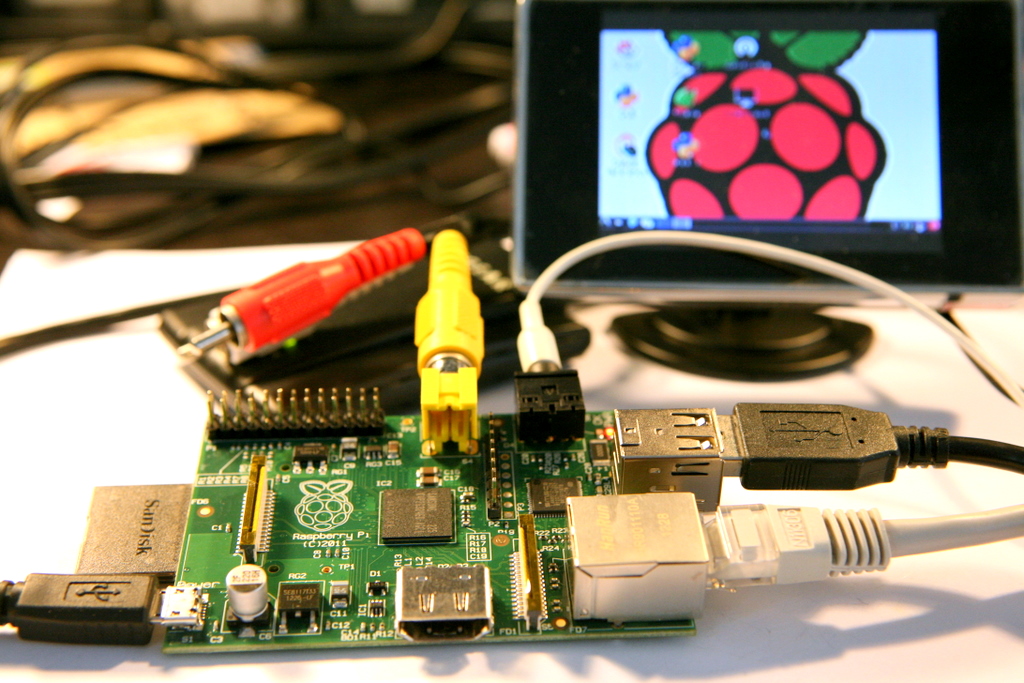Look at what came in the mail today:

It’s my first Raspberry Pi (Raspi)! I know I should have got it much earlier, but I was not fond of being put on a waitlist. Apparently I should have kept better track of it: I was checking some stuff on Newark.com the other day and accidentally noticed that Raspi is in stock. Without any hesitation I immediately placed an order. Three days later, it’s here!
First impression:
Gosh, it’s small! It’s the size of a credit card, and the build quality is pretty sold. It’s powerful eough to run a Linux system with X server, and it even has HDMI output so I can directly use it with my high-resolution LCD. The setup was quite easy. The machine boots from an external SD card. All I did was to grab a 4GB SD card, follow the instructions here to flash the default raspbian image onto the card, and insert it to the SD card slot on board. Then I used a micro-USB cable to power it up. I also digged out an old 3.5 inch LCD screen from Dx.com and it works perfectly with Raspi (though the resolution is low, hence it’s not really good for reading, but good for showing 🙂
Standard keyboard and mouse should work well out of box. This version (model B) of Raspi has two built-in USB ports. Of course you can use an USB hub to extend the ports. It doesn’t have a WiFi chip on board but it does have a Ethernet jack. I plugged in a NetGear WNCE2001 WiFi adapter and instantly I have WiFi connection. It also works with a variety of USB WiFi dongles, so it’s really convenient.
One of the biggest selling points of Raspi is of course its price: this model B is just $35 before tax and shipping (keep in mind that even an Arduino board, which has a must simpler microcontroller, would cost almost $30). This is totally impressive, especially considering we have to factor in reseller margins on top of the manufacturing cost. I don’t what’s the profit margin, but perhaps it is consistent with a recent article that discusses how you can’t make money any more on hardware, instead, it’s the software and service that keep consumers to buy in.
Anyways, I am glad I finally got one. There is a lot of stuff I am excited to experiment with using Raspi, and I am sure I will come up with some itneresting project ideas along the way. A thumb up for Raspi!
